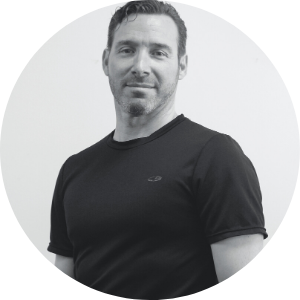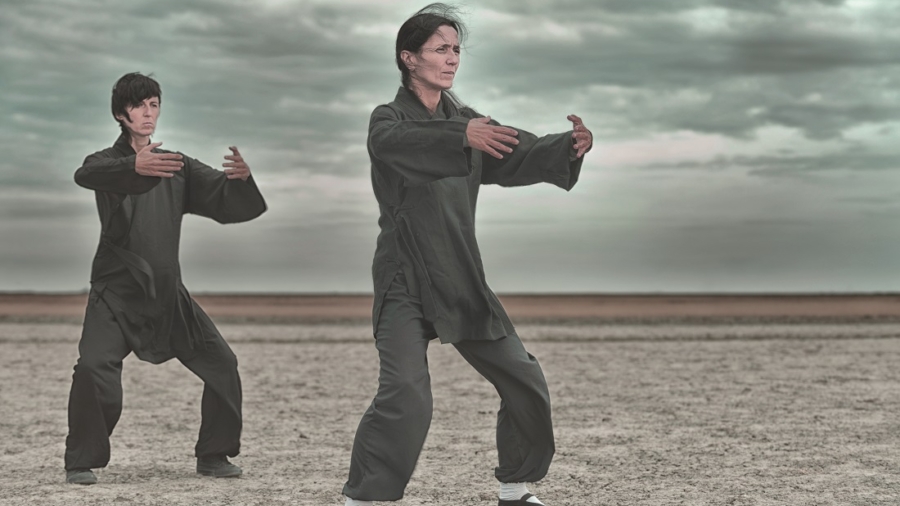by Noel Plaugher
Qigong is enjoying a greater popularity and awareness than even a few years ago, but I fear that with its popularity, there may be a tendency to make things more complicated than they need to be. Qigong is a great way to exercise and has many physical and meditative benefits, but I think that keeping things simple is the most productive way to practice. I am usually asked by prospective students, “Do you need to know a lot of “stuff” to practice Qigong?” Not really.
Years ago a friend of mine had gone to see a Traditional Chinese Medicine (TCM) doctor for his arthritis. He had tried Western methods, and they hadn’t done much, so he decided to give TCM a try. He told me about his experience.
“He (the TCM doctor) gave me some herbs, and told me to stand like this for 5-10 minutes a day.” My friend proceeded to show me how he was instructed to stand in a small horse stance with his hands held in front of him, palms facing each other, about the level of his navel. It looked like he was holding a small loaf of bread in front of his stomach. He was excited to tell me about his experience, because he said he felt it working. That was all he knew about it and it was fine.
The thing that always struck me about all of my Qigong and internal martial arts teachers was how much they stressed doing as opposed to talking about some of the more esoteric concepts regarding TCM. All of my teachers stressed doing the work and how things felt as opposed to intellectual knowledge. They would occasionally drop in concepts, but it was subtle, simple, and the lesson was always about doing the work. My first Qigong lesson consisted of holding a standing Qigong form, with no other instruction, other than relax and breathe. My teacher’s advice for building internal power was, “Just stand.” It should be remembered that Qigong means energy-work.
What I always liked about Qigong was that it was pretty simple. The focus was on the balance, breath and relaxation. You can teach the fundamentals pretty quickly to almost anyone. The student then has to practice; and that ultimately is where the rubber meets the road. When I teach, I always try to stress what I think is the absolutely most important element: the breath.
Breath
Whether thinking about Qigong, meditation or even martial arts, the breath is an integral part of the equation. I think that diaphragmatic breathing works best. By focusing on breathing diaphragmatically you can concentrate your mind and body on one essential function.
Here is a quick exercise that anyone can do that incorporates the breath and basic meditation. It can be performed sitting or standing. If you sit, use a chair with a straight back. Sit up straight with your feet flat on the floor. Rest your hands, open and flat, one over the other, about the level of your navel, or just below it.
To do the exercise while standing, keep your feet about shoulder width and bend your knees slightly. Drop your shoulders. Think about your head floating up. Rest your hands, as indicated above, one over the other, a little below your navel.
- As you stand or sit, think about breathing into the area beneath your hands.
- As you inhale, feel the breath pushing into the area under your hands, feel it expand; and as you exhale, feel your hands fall.
- Be sure not to press or do anything with your hands, they are merely a way for you to gauge your breath. They just ride on your abdomen.
- Concentrate your inhales and exhales into the area beneath your hands and feel your abdomen expand and contract with the breath.
I like to use a counting method to make the breaths longer and even. Start with a count of five for the inhale and five for the exhale. Once you feel comfortable with that duration, go to seven or nine. You will feel that you are breathing much more deeply, and you will be concentrating on what you are doing, which keeps you in the moment. While this exercise does not incorporate movement, it is still very powerful and teaches a valuable lesson in the benefits of simply focusing on the breath.
Form
I once taught a lady and after the lesson, she thanked me for making her feel comfortable in the class as it was her first day. She told me that she had studied before, but had stopped. When I asked why, she said that the teacher was constantly emphasizing all of the mistakes in her form. She was learning a Tai Chi set, and every time she did anything the teacher would point out everything wrong. She would get so hung up on doing the form that she would hold her breath and get upset. Eventually she quit. I asked her why she was studying Tai Chi. She told me it was for her anxiety. Do you think she got much anxiety relief from that class?
Proper form is important, but not to the exclusion of all else. Form is a work in progress. If you have perfect form, but are not breathing properly, or are completely anxious to the point of having a panic attack, what is it all for? I have been studying martial arts for 28 years and you only get better, never perfect. When I teach, I focus on the big picture, and over time dial in the other components. If a student is choosing internal arts for something like anxiety and the teacher is focusing on nothing but physical details, is that beneficial? When in doubt, I always go back to the question: Why are we here doing this?
Jascha Heifetz, the brilliant violinist, used to give master classes, and many of them were filmed. I watched them not just because I am a huge fan of his music, but because I liked to watch how he taught his students. He gave an extraordinary lesson once when he was instructing a group of students performing in an ensemble. He asked them before they started performing, “What is the most important thing?” The musicians were thrown a bit by the question and volunteered some answers before he interrupted, “Making music.” As technically proficient as he was, he never lost the reason for playing.
It is important to make sure that we don’t become so caught up in the technical aspects of Qigong that we forget the very benefits that we are seeking. Start with standing and breathing, and as you learn other things, always go back to the fundamentals, especially the breath. The most important thing is to do a little every day and build from there. As you learn, you will then have a solid foundation that you can build upon.
Find out more

Noel Plaugher began studying martial arts in 1990 after being a victim of violent crime. He is a third degree black belt in Kung Fu Shou Shu and a certified teacher of the internal art Xing Yi Chuan. He has also studied various forms of Qigong as well as Aikido and Judo. He lives in Atlanta, Georgia where he teaches and writes.
twitter.com/shunshifu1990
www.facebook.com/noel.plaugher.author/


